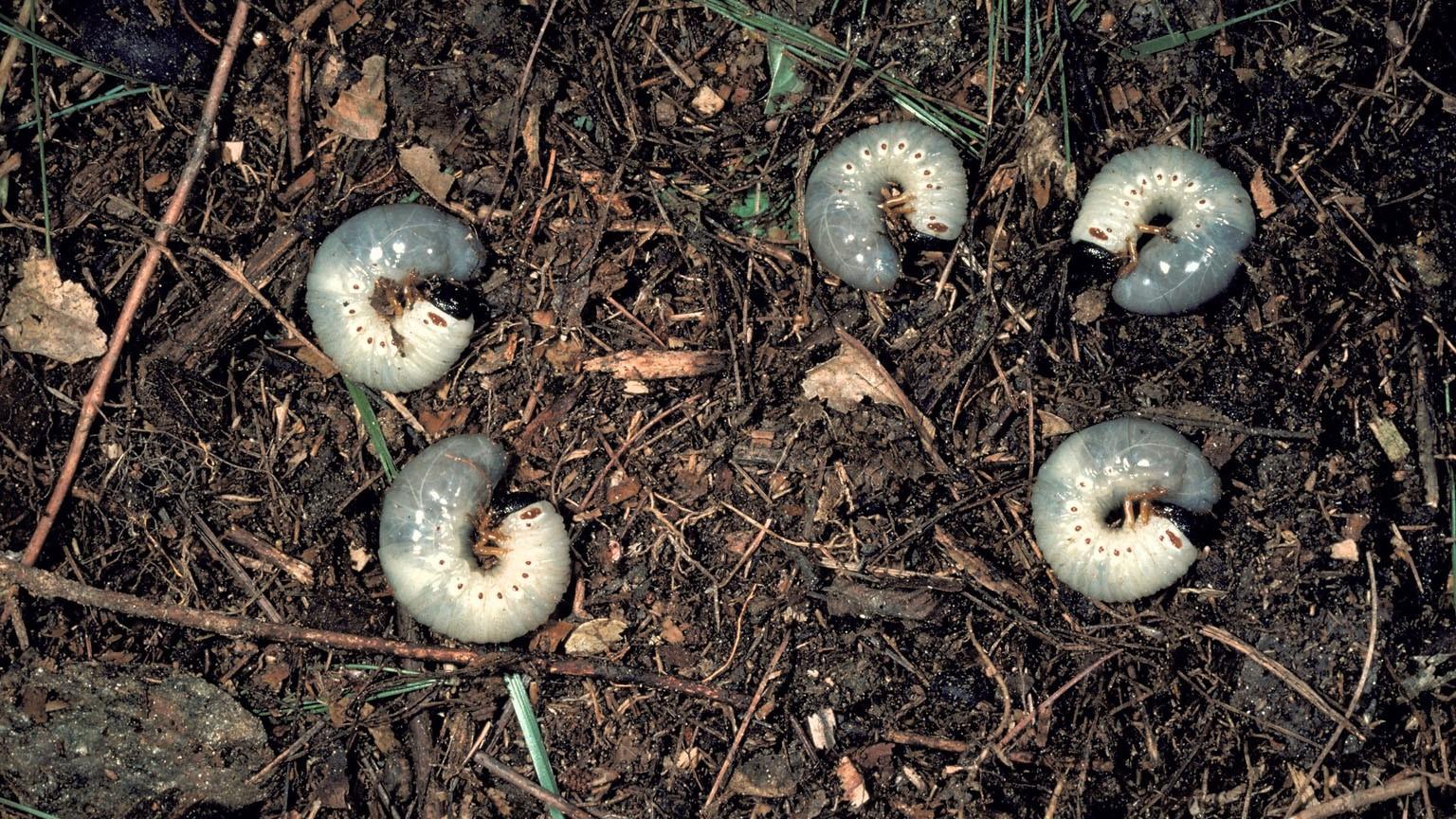Grubs that damage lawns are the larvae of Japanese beetles, May or June beetles, masked chafer beetles, or Oriental beetles. Grubs feed on the roots of plants, particularly grass and remain underground for one to three years until they emerge as adult beetles. Although grubs feed throughout the growing season, their damage is only severe in late summer. In areas of heavy damage, turf can be easily pulled up "like a carpet", there is an obvious lack of roots, and C-shaped grubs will be present in the soil. Japanese beetle grubs tend to be most common in new developments with bluegrass sod. In older established neighborhoods grub populations are generally kept in balance by natural factors such as parasites, predators, and diseases.
Grubs do not typically affect turf-type tall fescue lawns. Grasses most susceptible to grub damage are bluegrass and creeping red fescue. Research shows that damage will occur when grub populations exceed 6-10 grubs per square foot on bluegrass, rye, and fine fescue lawns and 8-15 grubs per square foot on tall fescue lawns. Most lawns can suffer a 10-15% stand reduction without a substantial loss in quality.


Management of grubs
- Resistant/tolerant turf varieties: Select turf-type tall fescues, zoysia or Bermuda grass.
- Chemical controls: Look for currently registered lawn insecticides. Follow label directions carefully for application rates, timing, and safety.
- White Grub Management in Lawns


